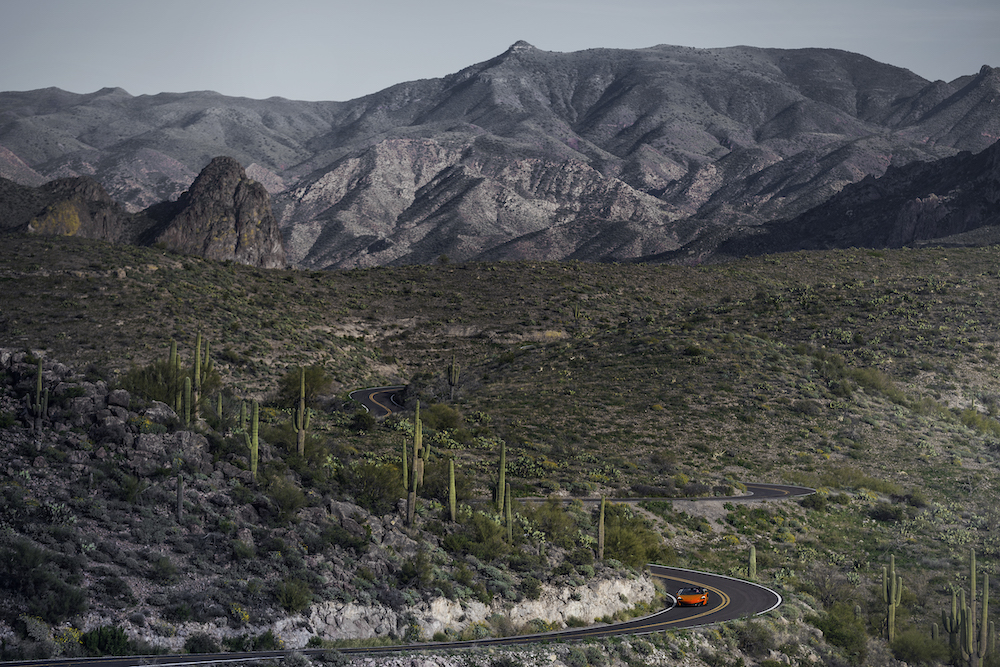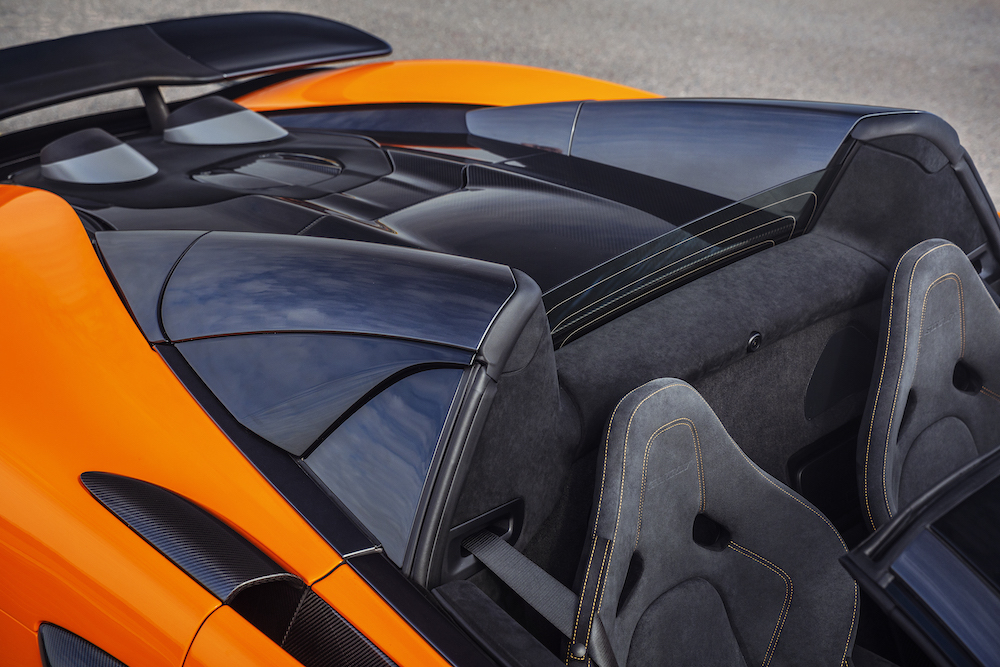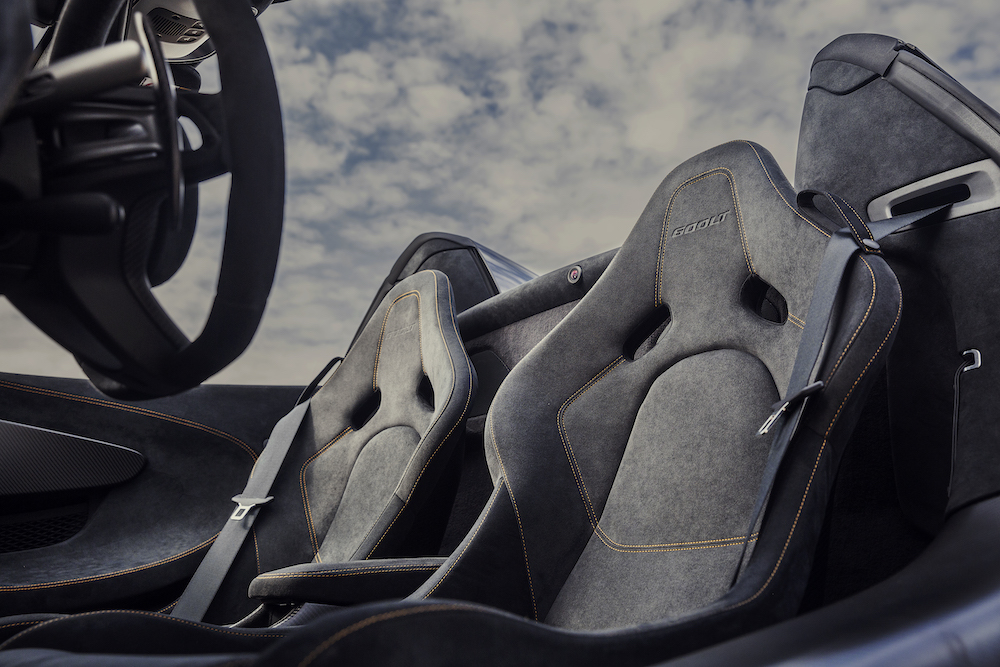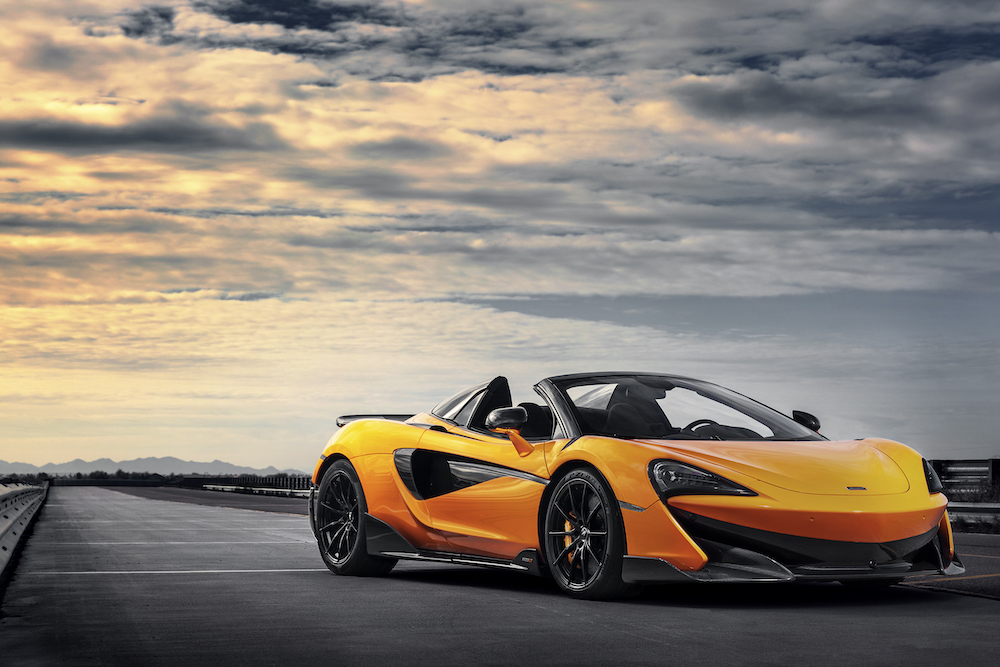We test drove the supercar maker’s latest: the 600LT Spider.
As far as supercars go, there are very few automakers with a heritage deeply rooted in the pinnacle of auto sport and Formula One racing. Ferrari might be the most obvious, but in just nine short years, McLaren Automotive has gone from streetcar start-up to one of the most dazzling supercar makers in automotive history.
The British company is currently the only wholly-owned automaker to run both an F1 and street car program, and in its latest release in their Sports Series lineup, the 600LT Spider, that astute attention to purpose-built detail and driver engagement couldn’t be more obvious.
This Spider version of the 600LT (short for ‘Longtail’) is the fifth instalment in a list of esteemed McLaren LT lineage that dates back to the famed F1 GTR Longtail that won Le Mans in 1997, followed by the 675LT and Spider, and the most recent 600LT Coupe. And with just 30 people (total) responsible for the creation and production of the latest Longtail, you can start to see how and why this McLaren is so special.


The principle nature of the LT designation is to push each car to its absolute limit in a wide range of areas: increased power, track-focused driving dynamics, driver engagement, limited production numbers (with an estimated 12-month production cycle), optimal aerodynamics, and minimal weight.
It’s in the latter two areas that McLaren has really been able to flex its muscle, credited to a patented, faster and more cost-effective carbon-fibre manufacturing process that has been fine-tuned since the company pioneered the carbon chassis on its 1981 MP4/1 Grand Prix racer.
These developments have allowed McLaren to create the 600LT’s mind-bending 75-kilogram Monocell II carbon chassis – a lighter and stronger offering – at a price where many of its competitors are still selling much heavier aluminum frames.
“A lighter car is a faster, more responsive, and more agile car,” says Ian Digman, McLaren head of project management, with a smile.
That’s no more evident then when you strap yourself into the standard-issue carbon-fibre bucket seats, taken straight from McLaren’s menacing P1 hypercar.




That driver-focused engagement starts from the design outward – with a mix of beautifully-brushed Alcantara and accent stitching that’s draped over a cockpit surrounding you in a sporty but tasteful mix of matte carbon fibre.
McLaren’s Super Series, while considered its “entry” into the McLaren lineup, is anything but beginner, but the 592 bhp powertrain and handling systems on the 600LT Spider can be configured independently for neutral, sport, or track driving, depending on your mood or use for the day. The adjustments make the 600LT Spider a surprisingly comfortable and adaptable driver in both slow-going, and wide-open driving situations.
Even better, this top-down hardtop offers both the quiet, supercar feel of the coupe plus the added exhilaration of a convertible, with nearly identical performance times of 0-100 km/h in just 2.9 seconds, and a staggering 0-200 km/h in just 8.4 seconds.
And somehow, your ball cap won’t go flying into the wind if you dare to try it.
Fast facts
600LT Specs & Highlights:
592 BHP 3.8L twin-turbo V8; 7-speed dual-clutch transmission; 324 km/h top speed (315 km/h w/ top down); 0-100 km/h in 2.9 sec; 75 kg Monocell II carbon fibre monocoque; 1,297 kg total weight; 3.52 hp/10kg power-to-weight; Top-exit exhaust; retractable hardtop roof (up to 40 km/h); 12-month limited production cycle; $298,500.
What we’re looking at is a drivable supercar that city slickers would relish for a spirited jaunt into and out of the office (so long as they avoid usual traffic patterns), or one a couple could pack their luggage into for a getaway to the cottage. The mid-mounted engine will destroy any hopes of fitting your golf clubs in the 600LT Spider, but then, this isn’t a car that’s aimed at what you can do out of it – it’s all about what you can do in it.
And after testing it for the better part of two days through the streets and tracks of Arizona, that’s all you’ll likely care (or want) to do. It’s a stunner, for those watching it to those driving – and though you might get asked if it’s a new Ferrari from unknowing onlookers from time to time, you can take joy in knowing that it ticks the two most important boxes of supercar status – engagement and exclusivity – perhaps better than any other bang for your buck.


Photography courtesy of McLaren








